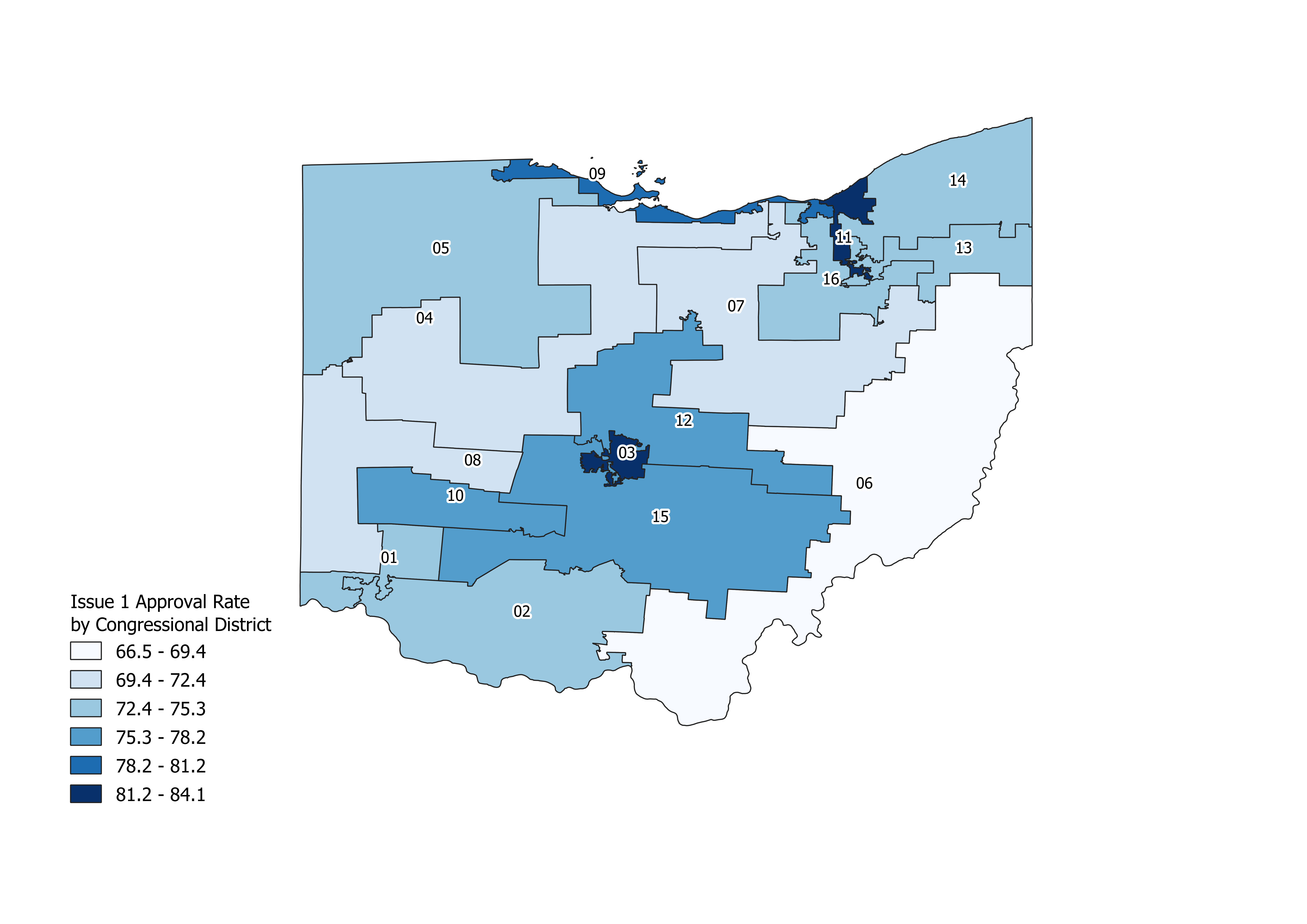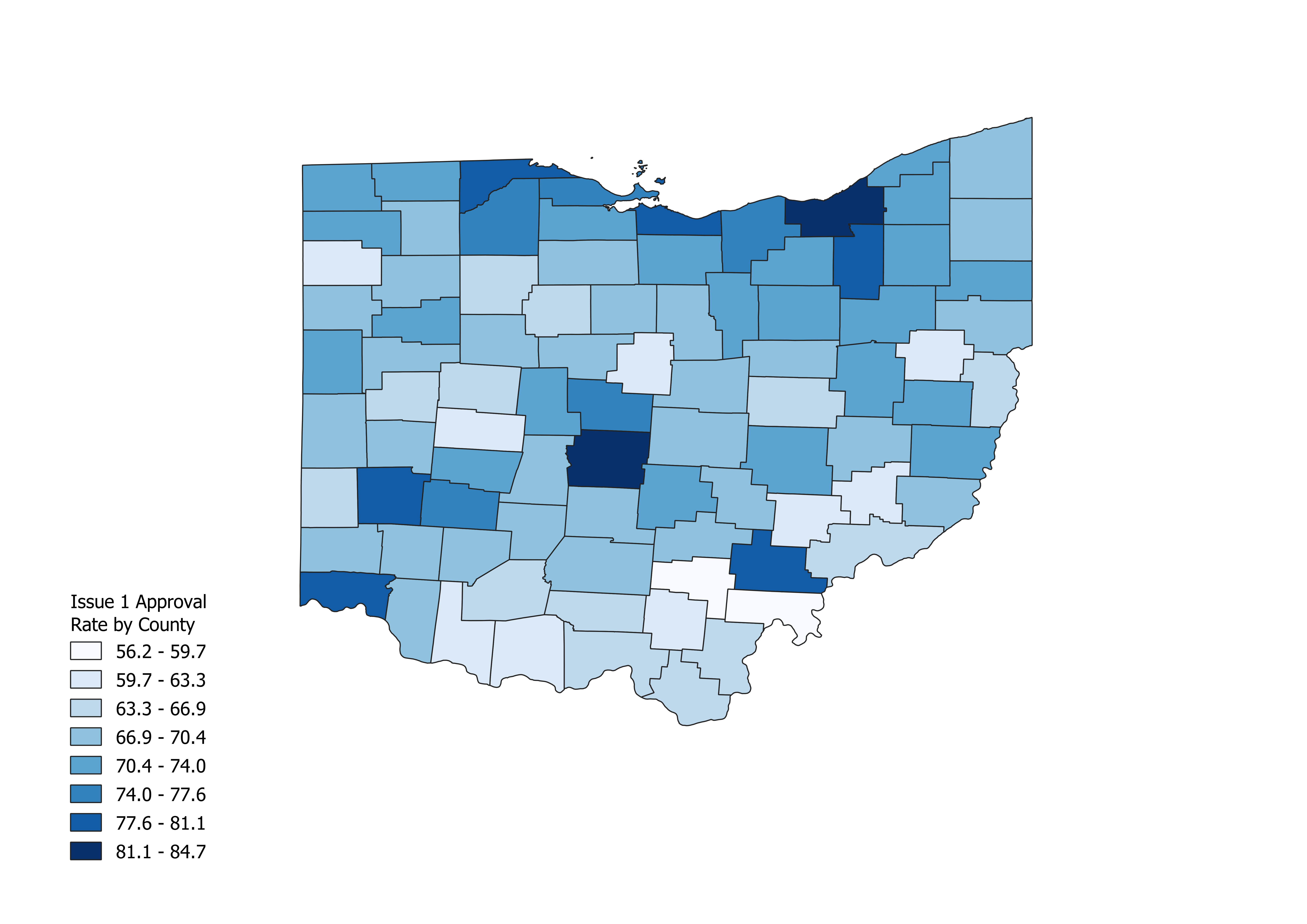In May, Ohio voters overwhelmingly approved Issue 1, a constitutional amendment to reform the state’s congressional redistricting process. Issue 1 will require congressional district plans drawn after the 2020 census to be passed with bipartisan support, enhance transparency, and encourage public participation in the redistricting process. As part of our assessment of the support for redistricting reforms across the country, we took a deeper dive into voter support for Issue 1, breaking down the results for each of the state’s congressional districts.
We found that Issue 1 passed with nearly 75 percent of the statewide vote cast in the May primary election and over 66 percent approval in every single congressional district — Republican and Democratic seats alike.
In order to estimate the approval rate of the ballot measure in each congressional district, we sorted each electoral precinct into its surrounding congressional district and then tabulated yes votes on the Issue for each district. The results, shown in a map and table below, demonstrate widespread support for the reform.

In even the least-supportive congressional district, the 6th in the southeast of the state, support for Issue 1 was more than 66 percent. Support for Issue 1 increases in the other districts, and in the 11th and 3rd districts, is about 84 percent. While support for Issue 1 is highest in the 3rd, 9th, 11th, and 13th districts — seats held by Democratic members of the U.S. House — the ballot measure was strongly supported in districts held by Republican members of Congress as well. If we tabulate the votes on Issue 1 by county, as we do in the map below, we can also see that support for the Issue was at least 60 percent in all but two counties and still passed with 56 percent support in the least-approving county. Redistricting may be a partisan political exercise, but the effort to reform the process is strongly bipartisan.

(Image: Shutterstock.com)


